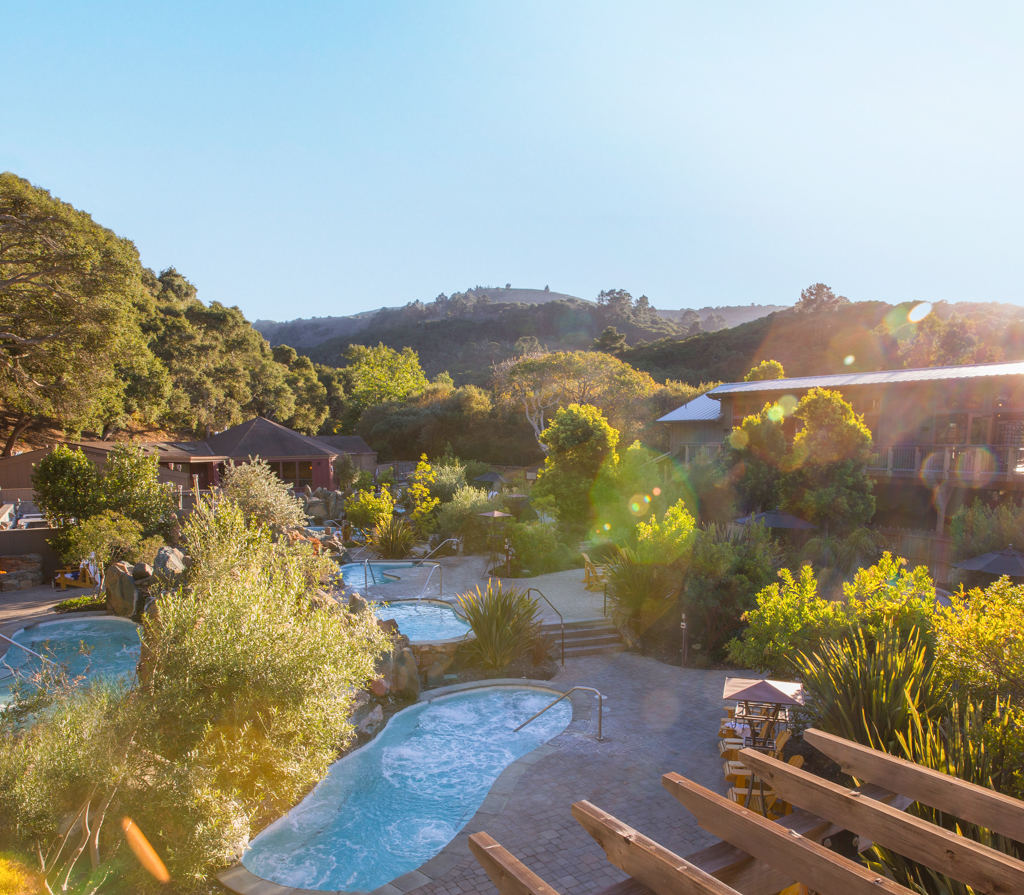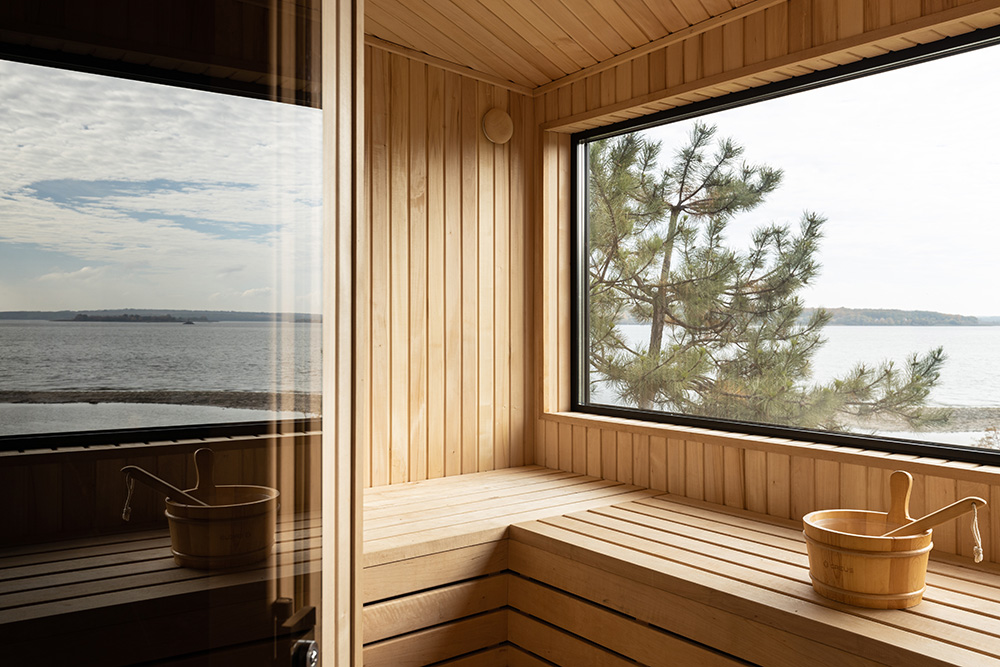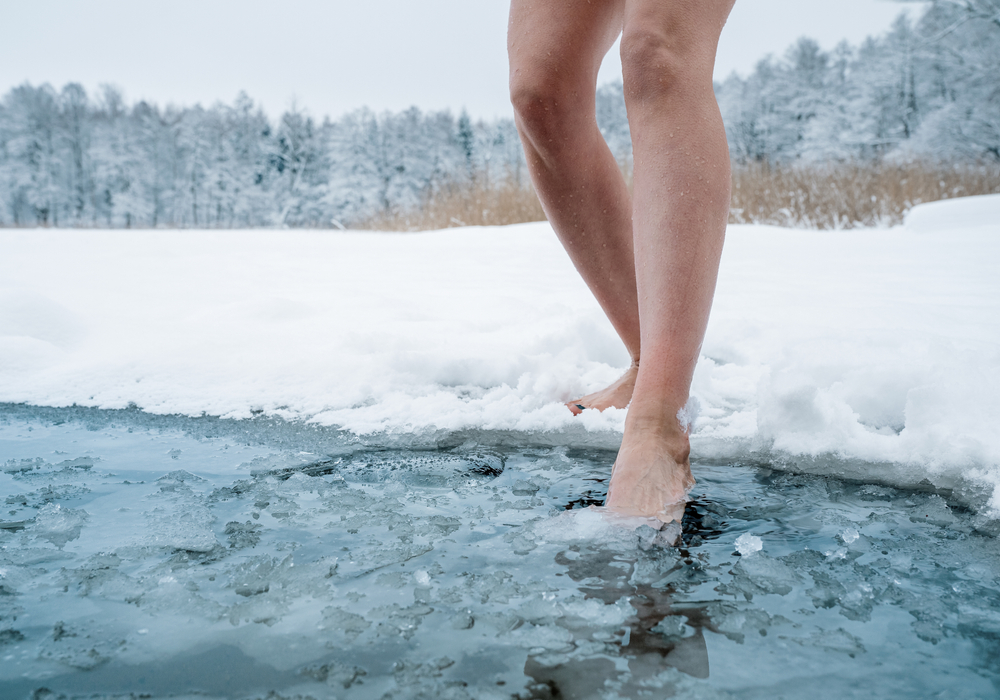The wellness benefits may surprise you.
For centuries, humans have flocked to mineral baths and hot springs, sweat lodges and saunas for their healing properties. Long before any scientific data could validate their benefits, human instincts prevailed anecdotally.
What’s Old Is New Again
Although hot and cold therapies have become mainstream in recent years in America (or at least in the mainstream of the health-conscious crowd), these therapies were widely used thousands of years ago. The word “sauna” is the only English word to have its root in the Finnish language. It is thought the use of saunas in Finland dates back as far 7000 B.C. But the use of heat to heal started even before that in tribal and indigenous cultures around the world seeking to purify the body through intense perspiration and, in the case of disease, to cure infection. The Roman and Greek bathhouses foreshadowed the modern spa and were a cornerstone of civil society. During the Ottoman Empire across the entire Islamic world, the Turkish hammam bathhouses foreshadowed what we know today as hydrotherapy circuits, as they encouraged heated experiences finishing with cool waters. These Turkish bathhouses spread across Europe and influenced what became the Victorian Turkish bathhouse which also incorporated hot-to-cold experiences.

Heat Therapy
Of course, the Finns (who just had their 6-year winning streak as the happiest country worldwide) are the most famous for their frequent sauna use. It would make sense then to study them. An ongoing prospective study of 2,300 middle-aged male Finns did just that. The Kuopio Ischemic Heart Disease Risk Factor Study (KIDH) found sauna usage lowered the risk of cardiovascular disease, dementia, and Alzheimer’s and all causes of premature death. These findings remained true across age, activity, and lifestyle factors. The study also found the effects were “dose dependent,” in other words, the more saunas, the better. Sound a bit hedonistic? Not really. The data was impressive. Men using the sauna two to three times a week were 27 percent less likely to die from age related cardiovascular (CV) disease and had a 65 percent lower risk of developing Alzheimer’s. Those using a sauna four to seven times a week were 50 percent less likely to have CV disease. Impressive.
How could the simple, relaxing, and enjoyable act of taking a sauna bath have such a profound impact on health outcomes? Truth is, the effects of a sauna bath may equal the effects of a moderate to high-intensity physical activity.
Why? A number of physiological changes happen in a sauna: skin and core temperature rise to approximately 104 degrees; cardiac output rises 60 to 70 percent; blood flow redirects from the core to the skin; and the extreme heat induces a beneficial stress. Extreme heat has been shown to increase longevity in both flies and worms. A review of evidence by the Mayo Clinic linked sauna use to reduced risk of high blood pressure, CV disease, and neurocognitive and pulmonary disease as well as lessening of symptoms in arthritis, headache, and flu.
What is the best way to safely enjoy a sauna?
- Always check with your healthcare practitioner first.
- Let your body guide you—listen.
- If you begin to feel dizzy, nauseated, or lightheaded, STOP.
- Avoid alcohol.
- Limit exposure to 15 to 20 minutes.
- Be sure to hydrate before a sauna and drink two to four glasses of water after use. Consider an electrolyte drink.
- Do not take a sauna if you are ill.
- If you are using a red light feature, be mindful to protect your eyes.

Cold Therapy:
While the subject of voluntary exposure to and immersion in cold water continues to be debated scientifically, there is some consensus that it may correlate to better health. Again, we turn to the Finns. A 2004 study cited in the International Journal of Circumpolar Health (yes, there is such a journal) of 49 Finnish swimmers who swam four times a week and 33 non-swimmers found the swimmers reported “a decrease in tension and fatigue and improvement in mood, memory and relief from pain and inflammation.” The study concluded “Winter swimming improves general well-being.”
For those who are not swimmers, the cold plunge offers a viable alternative. Cold water immersion has been associated with a myriad of benefits: reduction and transformation of brown fat, reduction of insulin resistance and improved insulin sensitivity, reduction in inflammation and improvement in immunity, mental resilience, and improved sleep quality. These benefits happen due to certain physiological responses that occur during a cold plunge, such as cutaneous vasoconstriction and cold-induced vasodilation, shivering thermogenesis (which increases metabolic heat production), non-shivering thermogenesis (which activates brown adipose tissue-BAT), and cardiopulmonary responses (cold shock response, increased blood pressure).
The temperature at which benefits occur may differ between the sexes. According to Stacy Sims, Ph.D., exercise physiologist and nutrition scientist, the temperature at which women derive benefits from cold plunging is “not as cold for women as it is for men.” While the general recommendation for cold plunges is between 50-and-60 degrees Fahrenheit, “… when women start to shiver or when women start to feel cold (is usually) around 55°F (to) 56°F water.”
Those who do cold water immersion swear by it. And some folks caught on way before cold plunging became a thing. Consider our very own Dolphin Club (aka Dolphin Swimming and Boating Club) and those who swim regularly in the bay at Aquatic Park. Joan Schriger, principal at Parallel Advisors headquartersd in San Francisco and a competitive swimmer, has been swimming in the bay for years. She says, “It is hugely invigorating to go for a swim in the San Francisco Bay; you feel like a thousand bucks. I backed into it slowly. First you build tolerance, then it becomes like an addiction. In my early days, we would go for a swim and then jump into our cars and crank up the heat intuitively.”
Those who plunge frequently in cold water mention anecdotally how it is a mood enhancer and staves off depression. They rave over its many positive physiological benefits. One of the earliest advocates of cold therapy was Wim Hof. In 2011, a study by Radboud University showed that “by using his method, Wim was voluntarily able to influence his autonomic nervous system—something which until then was thought virtually impossible.” Today, he teaches the Wim Hof Method® which consists of three pillars: breathing, cold therapy, and commitment.
Still, there remains a need for large, controlled studies on cold immersion, as most studies have been done in small groups, often on a single gender, and have confounding factors such as healthy user-bias and self-reporting.
If cold plunges or swimming in the Bay is not your style, then there are cold water baths or showers—available to almost everyone.
If you decide to cold plunge, here are some tips:
- Always check with your health practitioner first.
- Start with short stints; increase slowly over time: start with one or two minutes.
- Work up to three to five minutes.
- Let your body guide you—listen.
- If you begin to feel dizzy, nauseated, or lightheaded, STOP.
- Protect your skin if you do ice baths.
- Always end on cold to get the benefit of thermogenesis.
- Take breaks between days.

Hydrotherapy Circuits: Contrast Bathing from Hot to Cold
Hydrotherapy circuits offer an opportunity to alternate between hot and cold exposures to promote wellness. Increasingly, spas are offering hydrotherapy circuits, but you can accomplish a lot just with your own shower.
“Both heat and cold are healthy stressors for the body,” says Dr. Marcus Coplin, naturopathic medical director and medical director of The Springs Resort in Pagosa Springs, Colorado. “By stimulating the body to regulate against the temperature shift, a variety of physical and biochemical changes occur. As a regular part of a health and wellness practice, contrast bathing is a rational approach to keeping our bodies well-tuned and adaptable to life’s stressors,”
Garza Blanca Resort & Spa Los Cabos also offers hydrotherapy circuits. (Disclaimer: I have not tried it.)
For those living in the Bay Area who want to indulge a little closer to home, if you are visiting the Carmel area anytime soon, reserve and buy a day pass at the Refuge in Carmel, California. There is no overnight accommodation, so be sure to book a room for a night at one of the charming lodging options in the area. Enjoy the Refuge Thermal Cycle for an invigorating yet relaxing experience. Then top it off with a Swedish or deep tissue massage. Do not plan on chatting with friends or scrolling on your devices while there; they have a silence policy which is a huge part of its draw and a real opportunity to unplug.
Indulging at Home
To make heat and cold therapies part of your weekly wellness regimen, you cannot beat the convenience of home access. Many companies sell these products. Do your homework.
Here are a few resources to get you started in your search for home units:
- If you want to get serious about contrast bathing, check out www.ChillyGoat.com and their Valaris Terrain Hot Tub + Cold Tub.
- Looking for a healthy affordable and portable solution, check out: thersasage.com/collections/affordable-portable-saunas.
- For cold plunges, also check out www.Plunge.com
- For saunas, there are so many options available on the market today. Do your research to find the perfect fit for your needs. Two considerations most people do not think about are EMF exposure and whether the wood has been sprayed coming into the U.S. Ask about it. Brands frequently use the terms “low EMF,” “ultra-low EMF,” or “near-zero EMF.” It is worth researching before you buy.
In Summary
If you are not indulging in heat and cold therapy, you may be missing some great benefits. Looking at the Finns as well as back in history, saunas and the bathhouses were places of socialization. Lest we forget, social connection is one of the best contributors to optimal wellness and longevity. So, cozy up with friends or your partner to stay warm (or cold) and healthy!
Note: Nothing in this article constitutes medical advice. Please consult your physician if you have questions before undertaking any new physical activity or dietary changes.

Lydia is a passionate advocate of healthy living. She has launched and positioned many health and wellness-related companies, products, technologies and organizations receiving more than 100 awards nationally and internationally. Her focus in the health sector is specifically on healthy living, aging and longevity. She is a partner and investor in several recognized national brands. She sits on the board of the Buck Institute for Research on Aging whose mission is to eliminate the threat of age-related disease for today’s and future generations. It is the only independent research organization globally dedicated to extending the healthy years of life. Like the scientists at the Buck, Graham envisions it will be possible for people to enjoy life at 95 as much as at 25. To support Buck’s mission, please visit www.buckinstitute.org.
